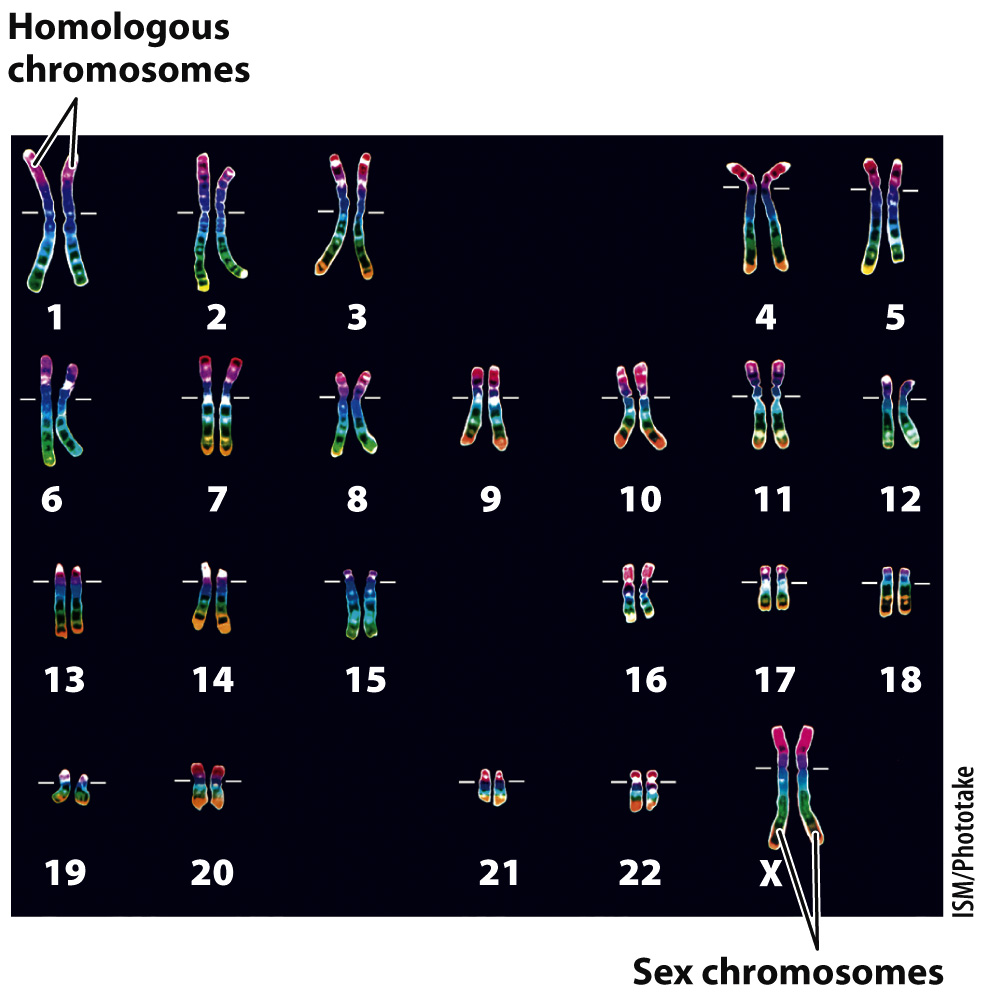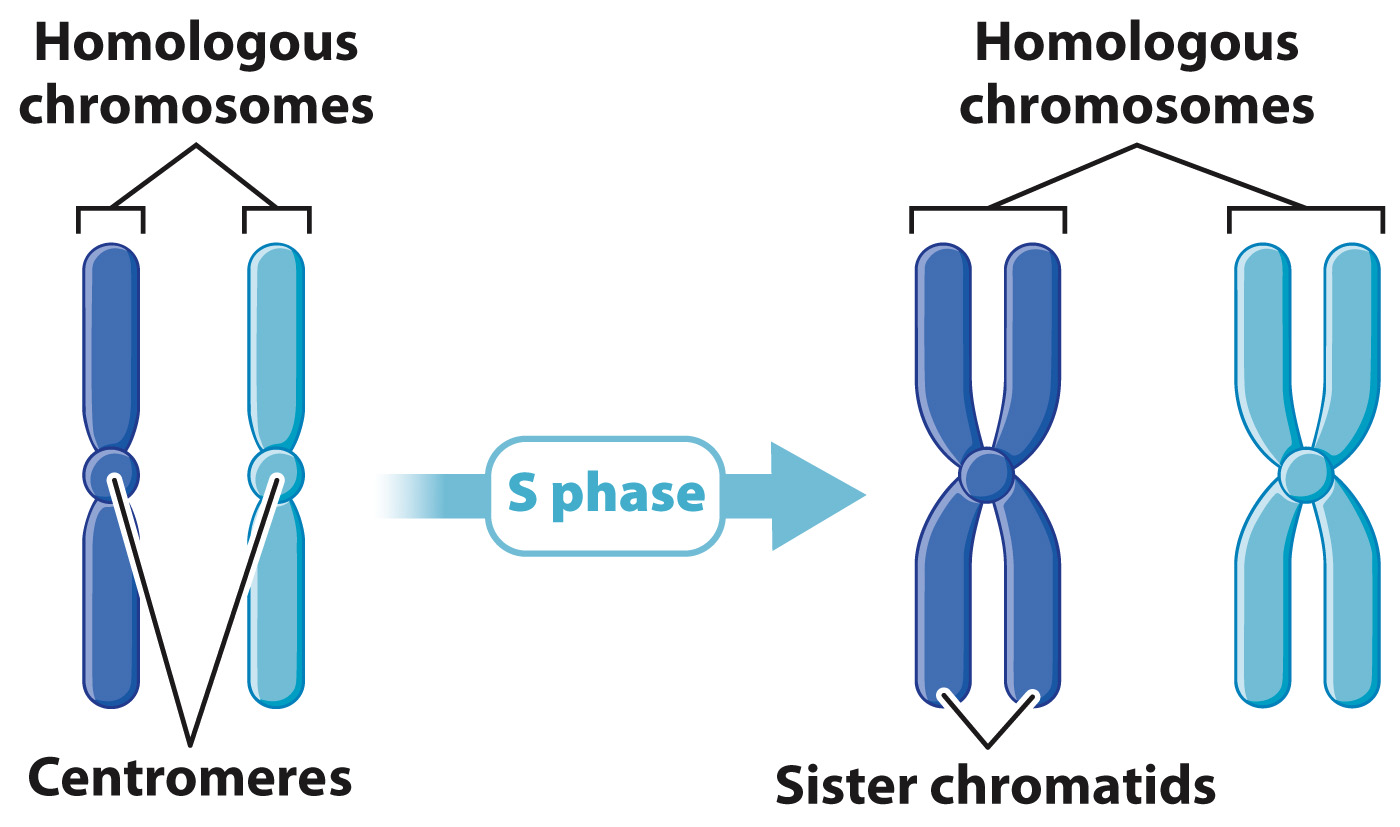The DNA of eukaryotic cells is organized as chromosomes.
One of the key challenges faced by a dividing eukaryotic cell is ensuring that both daughter cells receive an equal and complete set of chromosomes. The length of DNA contained in the nucleus of an average eukaryotic cell is on the order of 1 to 2 m, well beyond the diameter of a cell. The DNA therefore needs to be condensed to fit into the nucleus, and then further condensed during cell division so that it does not become tangled as it segregates into daughter cells.
In eukaryotic cells, DNA is organized with histones and other proteins into chromatin, which can be looped and packaged to form the structures we know as chromosomes (Chapters 3 and 13). One of the earliest events in mitosis is the condensing of chromosomes from long, thin, threadlike structures typical of interphase to short, dense forms that are identifiable under the microscope during M phase.
Every species is characterized by a specific number of chromosomes, and each chromosome contains a single molecule of DNA carrying a specific set of genes. When chromosomes condense and become visible during mitosis, they adopt characteristic shapes and sizes that allow each chromosome to be identified by its appearance in the microscope. The portrait formed by the number and shapes of chromosomes representative of a species is called its karyotype. Most of the cells in the human body, with the exception of the gametes, contain 46 chromosomes (Fig. 11.3). In contrast, cells from horses have 64 chromosomes, and cells from corn have 20.

In a normal human karyotype, the 46 chromosomes can be arranged into 23 pairs, 22 pairs of homologous chromosomes numbered 1 to 22 from the longest to the shortest chromosome and 1 pair of sex chromosomes (Fig. 11.3). Each pair of homologous chromosomes represents two of the same type of chromosome (both carrying the same set of genes), one of which was received from the mother and the other from the father. The sex chromosomes are the X and Y chromosomes. Individuals with two X chromosomes are female, and those with an X and a Y chromosome are male.
223
The number of complete sets of chromosomes in a cell is known as its ploidy. A cell with one complete set of chromosomes is haploid, and a cell with two complete sets of chromosomes is diploid. Some organisms, such as plants, can have four or sometimes more complete sets of chromosomes. Such cells are polyploid.
In order for cell division to proceed normally, every chromosome in the parent cell must be duplicated so that each daughter cell receives a full set of chromosomes. This duplication occurs during S phase. Even though the DNA in each chromosome duplicates, the two identical copies, called sister chromatids, do not separate. They stay side by side, physically held together at a constriction called the centromere. At the beginning of mitosis, the nucleus of a human cell contains 46 chromosomes, each of which is a pair of identical sister chromatids linked together at the centromere (Fig. 11.4). Thus, counting chromosomes is simply a matter of counting centromeres.

During mitosis, the sister chromatids separate from each other and go to opposite ends of the cell, so that each daughter cell receives the same number of chromosomes as present in the parent cell, as we describe now.
Quick Check 2 Which DNA sequences are more alike: a pair of sister chromatids or a pair of homologous chromosomes?
Quick Check 2 Answer
Sister chromatids are the result of DNA replication during S phase, and so they have identical DNA sequences (with the exception of a few changes due to rare mutations). The two homologous chromosomes are inherited from two different parents. The DNA sequences of these chromosomes are therefore similar, but not identical.